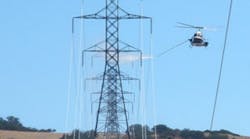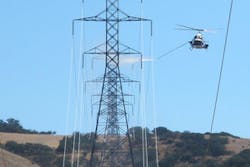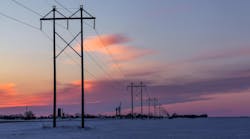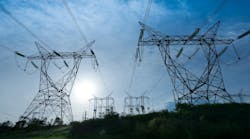As part of its ongoing effort to improve the safety and reliability of its electric system, PG&E routinely uses a specialized helicopter to wash a targeted set of power lines that tend to accumulate significant amounts of contamination throughout the year such as dirt, salt and bird excrement. This contamination can build up inside electric insulating equipment and cause power outages.
PG&E’s line washing helicopter is mounted with a system that utilizes a 30-ft boom to shoot a stream of high pressure water on the insulators to wash them clean. This week, residents of San Luis Obispo County might see the helicopter in action as it rinses power lines in the area.
“Using helicopters to wash contamination off power lines is an efficient and effective way to significantly improve reliability for our customers,” said Gregg Lemler, vice president of electric transmission operations for PG&E. “This program is a great example of how PG&E is working every day to provide safe, reliable and affordable service.”
Heavy fog along coastal regions can leave corrosive salt on electrical equipment and farm work in the Central Valley can kick up a good amount of dust and dirt. If too much dirt builds up inside electric insulating equipment, electricity can track across the dirt. This “tracking” can activate protective equipment on power lines and cause momentary outages that typically last just a few seconds. If left alone, this contamination can eventually cause more serious damage to equipment resulting in longer outages for customers. To improve service reliability, PG&E’s line washing program targets power lines that have experienced outages caused by contamination in the past.
Helicopters are a very efficient way to perform this work. PG&E can clean about 150 electric towers and cover approximately 20 miles a day with a helicopter as opposed to about 50 towers a day with a line washing truck. In total, PG&E cleans 11,000 to 12,000 targeted electric towers each year. The 30-foot boom that PG&E uses during this work helps operators aim the water directly onto the electric insulators that need to be washed, so little water is wasted in the process.
PG&E typically begins washing lines in Northern California and the Bay Area around June. The program then travels down the coast to San Luis Obispo County and continues in the Central Valley before the scheduled work ends in October.



